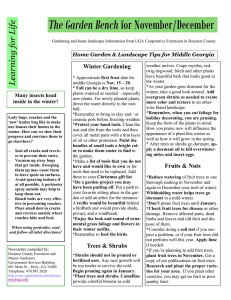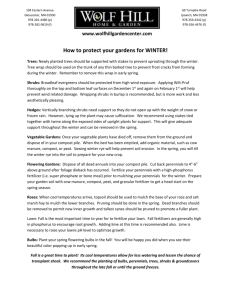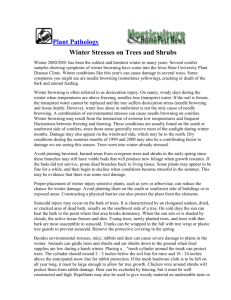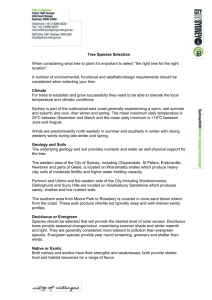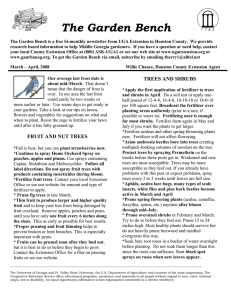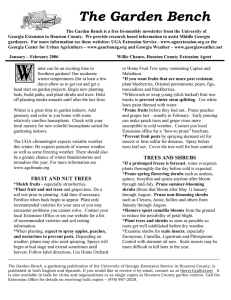Winter Watering - Sun Country Meadows
advertisement
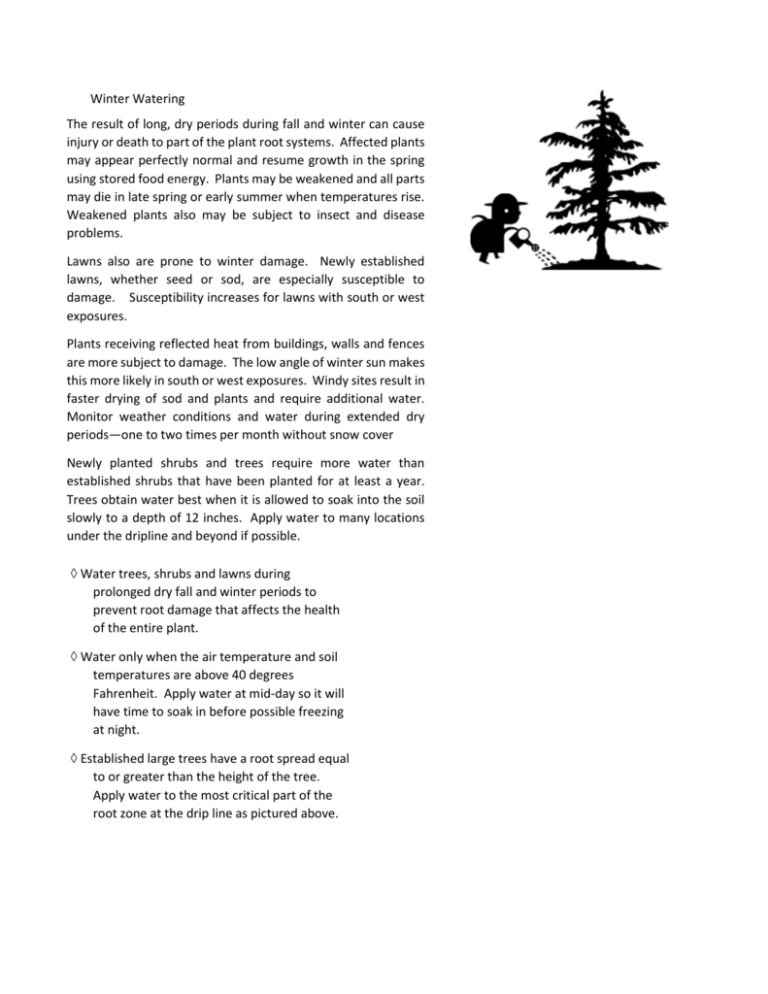
Winter Watering The result of long, dry periods during fall and winter can cause injury or death to part of the plant root systems. Affected plants may appear perfectly normal and resume growth in the spring using stored food energy. Plants may be weakened and all parts may die in late spring or early summer when temperatures rise. Weakened plants also may be subject to insect and disease problems. Lawns also are prone to winter damage. Newly established lawns, whether seed or sod, are especially susceptible to damage. Susceptibility increases for lawns with south or west exposures. Plants receiving reflected heat from buildings, walls and fences are more subject to damage. The low angle of winter sun makes this more likely in south or west exposures. Windy sites result in faster drying of sod and plants and require additional water. Monitor weather conditions and water during extended dry periods—one to two times per month without snow cover Newly planted shrubs and trees require more water than established shrubs that have been planted for at least a year. Trees obtain water best when it is allowed to soak into the soil slowly to a depth of 12 inches. Apply water to many locations under the dripline and beyond if possible. Water trees, shrubs and lawns during prolonged dry fall and winter periods to prevent root damage that affects the health of the entire plant. Water only when the air temperature and soil temperatures are above 40 degrees Fahrenheit. Apply water at mid-day so it will have time to soak in before possible freezing at night. Established large trees have a root spread equal to or greater than the height of the tree. Apply water to the most critical part of the root zone at the drip line as pictured above.
